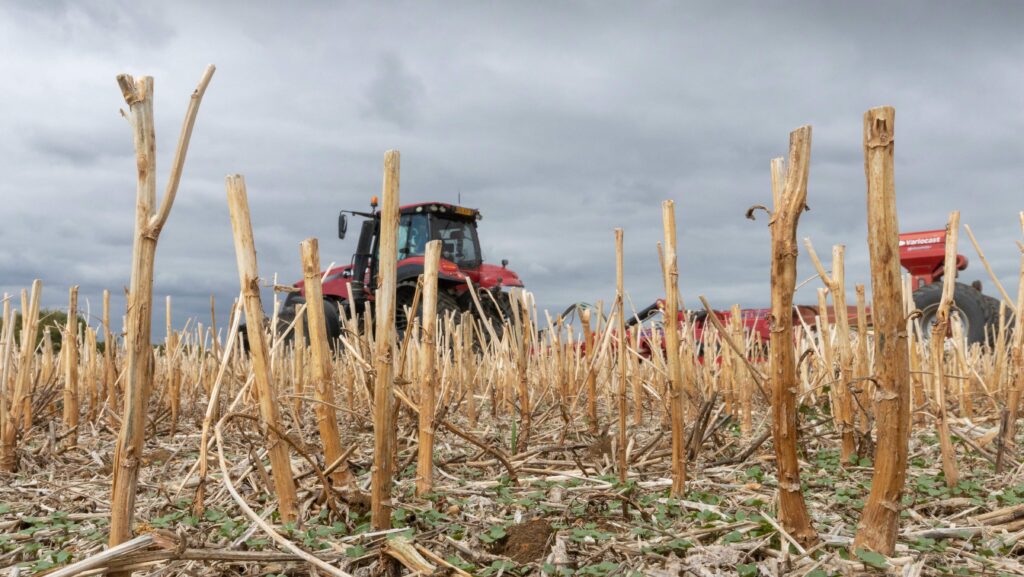How harvest cultivations can help beat flea beetle in OSR
 © Tim Scrivener
© Tim Scrivener Shallow cultivations carried out shortly after the combine can help reduce adult flea beetle populations, but more research is needed to refine advice to growers.
Speaking at a recent Limagrain oilseed rape seminar, Niab break crop specialist Colin Peters says that detailed soil analysis revealed that most cabbage stem flea beetle larvae can be found in the top 30mm.
See also: How arable farmers can introduce SFI 2023’s no insecticide option
“We just found a few odds and sods further down”.
Therefore, he believes the pupae are vulnerable to physical damage by cultivations at this stage.
He tested this in cultivation trials on farms with high beetle populations.
Results (see table) showed reductions of up to 98% in adults emerging from the soil when cultivated straight after the OSR was combined, compared with non-cultivated ground.
However, results did vary (see table) from 37.5 to 98%.
Percentage reduction of adult cabbage stem flea beetle |
|||
|
Location |
Shallow |
50mm |
250mm |
|
Essex |
– |
– |
98 |
|
Shropshire |
37.5 |
49 |
82 |
|
Hertfordshire |
68 |
56 |
– |
|
West Shropshire |
– |
85 |
69 |
Trials have shown that cultivation can be a successful tool to reduce larvae numbers, but more information is needed to understand how it works.
He adds: “Where the shallow cultivation in Shropshire was less effective, we want to examine how much of the soil at that depth was actually moved as the discs often throw soil across the surface giving the appearance that all the soil has been moved.”
Similarly, work with a straw rake found it was bouncing and cultivation depth was inconsistent where the soils were too dry and hard.
Colin is looking to do more detailed work investigating cultivation patterns in soil.
The aim is to know what farmers need to do to get effective control; for example, which cultivator and on what type of soil.
He also points out that work is needed to determine what triggers larvae emergence from soils.
Last year was the first time they had emergence traps within a growing crop, at two sites.
In Shropshire, larvae were reported to emerge before harvest while in Hertfordshire emergence was much later after harvest.
Another potential approach is to avoid areas where the crop was previously grown, thereby avoiding fields with high populations.
He points to Sweden where farmers are now advised to not grow OSR within 500m of fields, which contained the crop the previous season.
Colin adds that in Cambridgeshire in 2019, a lot of crops were lost during the winter which meant that many larvae perished as well, and it took three years for populations to build back up.
In that period, they saw reasonable crops before numbers recovered. It suggests a co-ordinated regional approach could help reduce risk.

